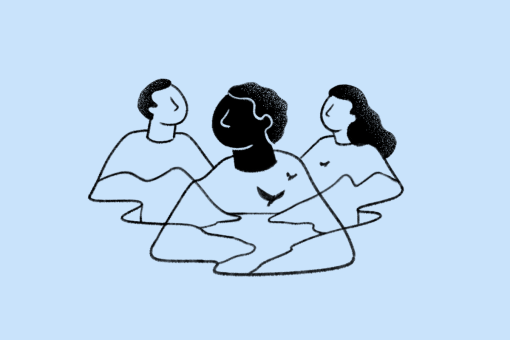Ever wondered how self-managed individual support at Relief came into being?
In fact, it's quite simple. This idea stemmed from various individuals concerned about mental health (anxiety, depression, and bipolar disorder) seeking solutions to improve their well-being. Relief, at its core, has always aimed to listen to expressed needs and respond effectively, which is why we can share this creation story today.
For several years, recurring questions arose. For instance: 'I don't feel ready to practice self-management in a group, is it possible to do it with one of your facilitators?' or 'Can we delve deeper into one of the tools?' For Relief, it was evident that we needed to create a new service together with those concerned. Relief opted for a participatory approach known as experience-based co-design to flesh out all the details of the new service.
So, what happens when you're part of a co-design team?
We lay down a playing field defined by certain parameters and invite individuals facing mental health challenges, such as anxiety, depression, and bipolar disorder, to ponder all the details surrounding the service. It was about envisioning the future of a self-management service realistically and creatively.
In co-design, we imagine having a magic wand with which we toss out ideas, catch a few, and make choices. In groups, we tackle themes and address economic and practical issues.
In concrete terms, three researchers, two psychology and psychoeducation students, a clinical director, 12 individuals with lived mental health experiences, and nine meetings spread over a year came together to shape the service as you know it. Each person drew inspiration from their own past or current experiences to envision an active service that meets the needs.
“For me, co-design optimizes my way of operating. Co-design and support have complemented my journey. It's organic, rooted in creativity, and the concept of choice. The approach proposed and the space created for the process to emerge have named and observed impacts on my cognitive activation.”
- Participant
What do co-design and self-managed individual support have in common?
Autonomy in decision-making and empowering individuals is at the heart of Relief's intentions, from the registration process to individual support. By commencing a journey with your self-management profile, you choose your priority themes, and throughout your journey, you decide to take action by reading the platform. When the service was conceived, co-designers did the same: they had to trust their personal journeys and select parts of their experiences to make decisions about the future service.
In conclusion, Relief has a special desire to recognize, honor, and value people's experiences. Not just for aesthetics, but because the actual process of people 'living with' is an indispensable source of information to create suitable, meaningful services. It becomes a seamless process in which everyone's voices can resonate.
Isn't that inspiring?
Blog post written by Christine Sauvé, Research and Clinical Activity Project Manager, and Annie Cusson, Peer Researcher.



